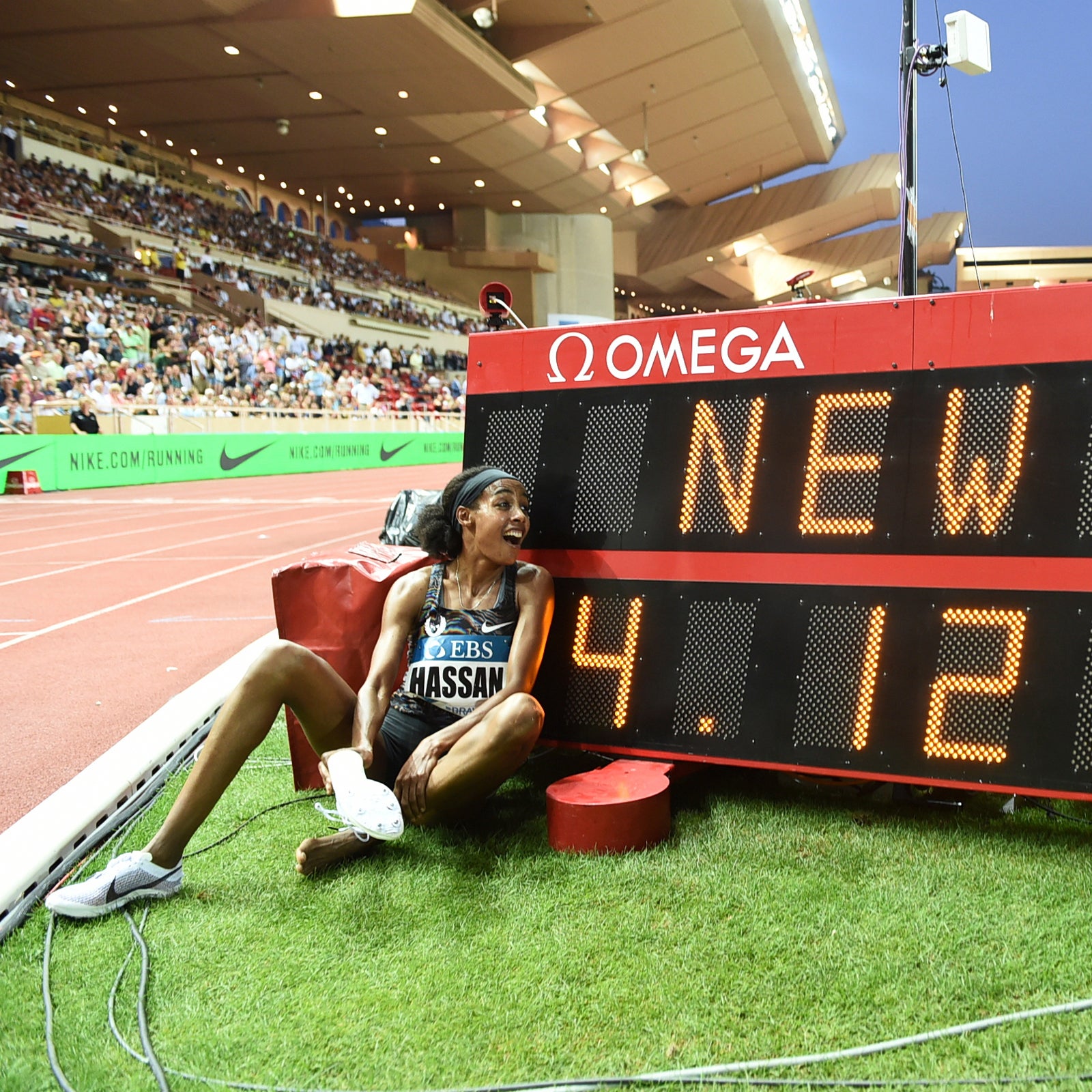On Friday, 26-year-old Dutch-Ethiopian Sifan Hassan , running 4:12.33 in Monaco. Despite the outward significance of that achievement, for my money, the highlight��of the 2019 outdoor track season so far came in the women’s 3,000-meters at the ��in late June. In that race, Hassan and her Oregon Project teammate Konstanze Klosterhalfen (aka “KoKo”), 22, left a field of Olympic and world champions in their dust to run 8:18.49 and 8:20.07, respectively.
To put those times in perspective, who have ever run faster outdoors were the Chinese in 1993 who made up “Ma Junren’s Army,” a team named after the notorious trainer who attributed his athletes’ unprecedented successes to, among other things, and the fact that his mother was a deer goddess. It could have been the perfect premise for a bestselling book by Christopher McDougall, were it not for the inconvenient detail that several of Junren’s runners subsequently tested positive for doping.��(Not to mention an alleged in which several disgruntled members of the Army claim that Junren forced them to take vast quantities of banned substances for years.) Anyway, it’s safe to assume that most track fans today will regard Hassan as the new (unofficial) world record holder in the outdoor 3,000.
As��members of��the Nike-sponsored , Hassan and Klosterhalfen��also compete for a team whose head coach, Alberto Salazar, has long had a slightly sinister reputation. While Salazar’s defenders will point to the fact that none of his stars have failed a drug test, critics will cite the examples of ex-OP athletes like Kara Goucher and , both of whom claim to have been pressured by Salazar to take (legal) performance-boosting substances against their will. And let’s not forget former OP coach Steve Magness, who said that Salazar used his own son as a guinea pig to determine how much testosterone gel could be externally administered before it triggered a positive test. All of this prompted USADA to of Salazar and the OP in 2016, which, as far as anyone knows, is still ongoing.
But the Oregon Project today is a different team than it was in 2015, the year that that included damning testimony from Goucher and Magness. Gone are the gold medalists from Rio 2016, Mo Farah and Matthew Centrowitz, as well as high school prodigy . Although none of these athletes had a public falling out with the club and all had valid reasons for seeking new pastures, it’s hard to imagine that the OP’s negative publicity didn’t play a role. After the ProPublica report was published, that his name was getting “dragged through the mud.” Of course, the principal source of that negative publicity was Alberto Salazar, who remains very much in charge, thus presenting a potential conundrum for those who want to root for new OP recruits.
“I personally have a hard time getting excited about any athlete who puts his or her trust in a coach that operates under a cloud of constant suspicion and has a history of practices that are shady at best, illegal and immoral at worst,” coach Mario Fraioli wrote in this week’s edition of his running newsletter, .
In the past several years, the OP has added more international talent to its ranks, a radical move for an initiative that was started for the specific purpose of restoring American distance running to its former glory. In addition to Hassan, who joined in late 2016, and Klosterhalfen (2018), the current roster now features Ethiopia’s Yomif Kejelcha (2017), who recently broke the world record for the indoor mile, and Suguru Osako (2015), one of Japan’s best marathoners.��
There still seems to be plenty of emphasis on nurturing homegrown talent, however, especially in the mid-distances where recent additions include Olympic bronze medalist (800-meters) Clayton Murphy and collegiate standout Craig Engels. At the same time, marathoner Jordan Hasay has been on the team since 2013 where— notwithstanding—she has blossomed under Salazar’s tutelage; at the 2017 Chicago Marathon, she ran 2:20:57, the second-fastest time ever run by an American woman.��
Which brings us to Galen Rupp, the men’s champion at Chicago 2017. Rupp has been coached by Salazar since high school and, as a two-time Olympic medalist and American record holder in the 10,000-meters, has done more than any other athlete to validate the original OP mission. I’ve been critical of Rupp in the past, largely because I always got the impression that the prime distant running talent of his generation often didn’t seem interested in giving anyone a reason to care. (Never was this more apparent than in a 2017 ��where, when asked about a New York Times exposé from earlier that year which asserted that OP members had potentially been infused with illegal quantities of��L-carnitine, Rupp replied that he hadn’t even read the story. I mean, wouldn’t you be at least a little curious if a national newspaper published a story about alleged illegal activity in your small, insular club? Maybe it’s just me.)��
In fairness, Rupp, who had surgery on his Achilles last fall, has agreed to participate in��a new mini-documentary about his ongoing recovery called “.” It is one of several recent short films made by the creative agency which purport to offer a behind-the-scenes look at Oregon Project runners. There’s also one on Kejelcha’s pursuit of the indoor mile record, ambitiously titled “.” If I didn’t know any better, I would think that a club that had been criticized in the past for being overly secretive was making a conscious effort to provide fans with a compelling narrative.��
It would certainly be in their best interest. For better or worse, it’s becoming increasingly clear that pro runners need to do more than just win races or run fast times if they want to garner the support of a wider audience. (Even Eliud Kipchoge has been as he gears up for his next attempt at breaking the two-hour barrier.) Other top-level running teams like the Northern Arizona Elite and the “” grasped this a long time ago. The Oregon Project, for all their talent, still have work to do.


